
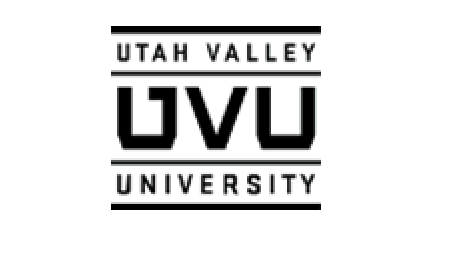
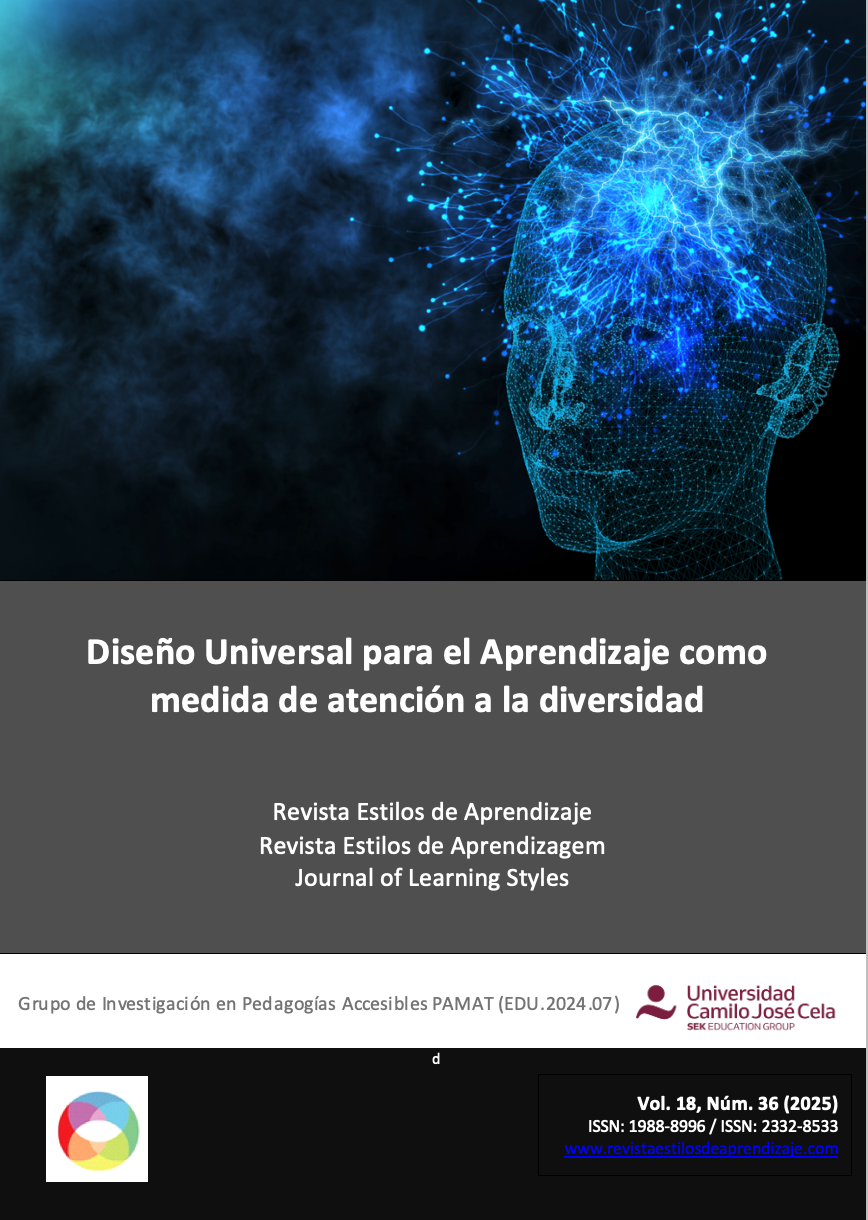
Today's education system faces a decisive challenge: to offer an inclusive and equitable response to the growing diversity of its student body. In this scenario, Universal Design for Learning (UDL) has established itself as an essential pedagogical framework, capable of bridging the gap between theoretical precepts on inclusion and everyday classroom practices. Far from being understood as a simple methodological strategy, UDL constitutes a transformative paradigm (Meyer et al., 2013; Rose & Strangman, 2007; Sánchez Fuentes; 2022) whose origins lie in accessible architectural design and its subsequent application to the field of education, highlighting the need to anticipate the needs of everyone (CAST, 2024). It cannot be ignored that the debate on inclusion and UDL is set against a recent historical backdrop: the global health crisis. As a previous editorial in this journal recalls, the pandemic forced us to rethink methodologies, accelerate digitisation and address the technological divide as a new form of exclusion. This monograph has been promoted within the framework of the DUAMAT.1 Research Project, funded by the 10th Call for Research Proposals of the Vice-Rectorate for Research, Science and Doctoral Studies at Camilo José Cela University (UCJC), Spain. It is also linked to the PAMAT Accessible Pedagogies Research Group (EDU.2024.07), attached to the Faculty of Education of Camilo José Cela University.
Coordinadores invitados:
Joanne Mampaso Desbrow, investigadora principal del grupo PAMAT (pedagogías accesibles como medida de atención a la diversidad). Grupo de investigación de la Facultad de Educación. Universidad Camilo José Cela, UCJC, España.
Diego Galán Casado, grupo de investigación en Intervención Socioeducativa (Contextos-ISE). Departamento de Teoría de la Educación y Pedagogía Social. Universidad Nacional de Educación a Distancia, UNED, España.
Sergio Sánchez Fuentes, grupo de investigación sobre Educación Inclusiva y diversidad. Facultad de formación de profesorado y educación. Universidad Autónoma de Madrid, UAM, España.
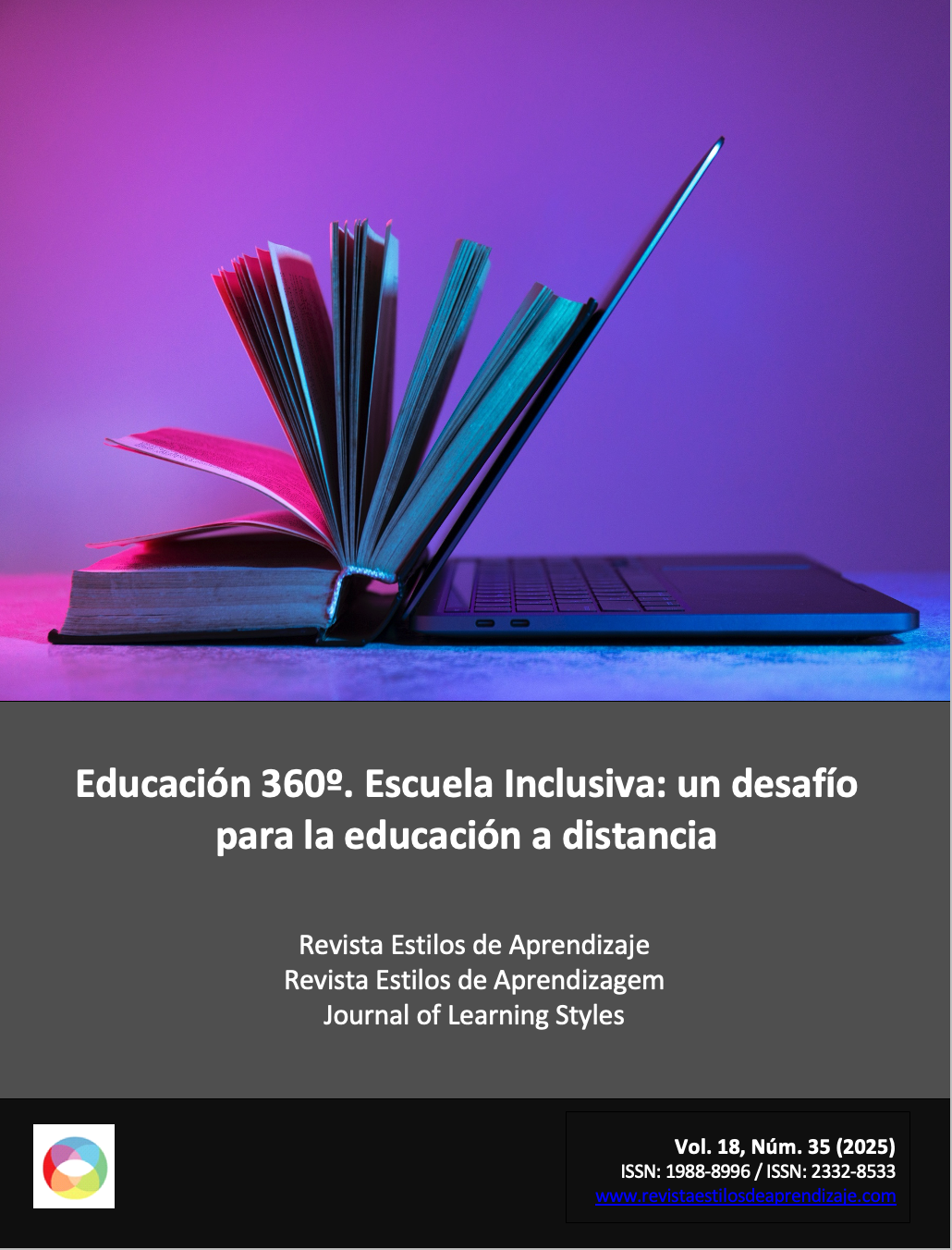
Education is in a constant process of transformation in the face of a dual need. On the one hand, it must respond to the preferences and profiles of a highly heterogeneous student body and, on the other, it must provide specialists for an increasingly diversified and demanding labour market. The new social configuration, in which technology plays an essential role, means that training modalities revolve around ubiquitous learning and its multiple possibilities (Novoa et al., 2020). This new prism has made distance learning increasingly demanded, not only by an adult audience (something common in the past) but also by a younger and younger student body. Thus, the new educational paradigm, in line with Sustainable Development Goal 4 of the 2030 Agenda (United Nations, 2015), aims to guarantee quality education that is more democratic, more international, more inclusive, more personalised and accessible from anywhere. In this context, this issue of the journal is structured around two thematic lines: Distance Education and Special and Inclusive Education. These lines offer the possibility of delving into different aspects that contribute to making known the level of achievement of the objectives set and what is being done to achieve the Education for All promoted by UNESCO at the World Conference on Education held in Jomtien (Thailand) in 1990.
For this reason, this monograph brings together studies and research that address inclusive education and diversity from a 360º perspective and through the prism of distance education. Educational policies, internationalisation as well as teaching and learning models (methodologies, teachers, students), teacher training and educational innovation are, among others, some of the topics addressed in the publication. Artificial Intelligence (AI) On the other hand, and in the context of the influence of technology in education, some studies have been collected on strategies, methods and resources that are directly included in the development of distance education from an inclusive vision.
Editores colaboradores:
Dra. Juana María Anguita Acero, Universidad de Castilla - La Mancha, España
Dr. Óscar Navarro Martínez, Universidad de Castilla - La Mancha, España
Dra. Daniela Melaré Vieira-Barros, Universidad Aberta de Lisboa, Portugal
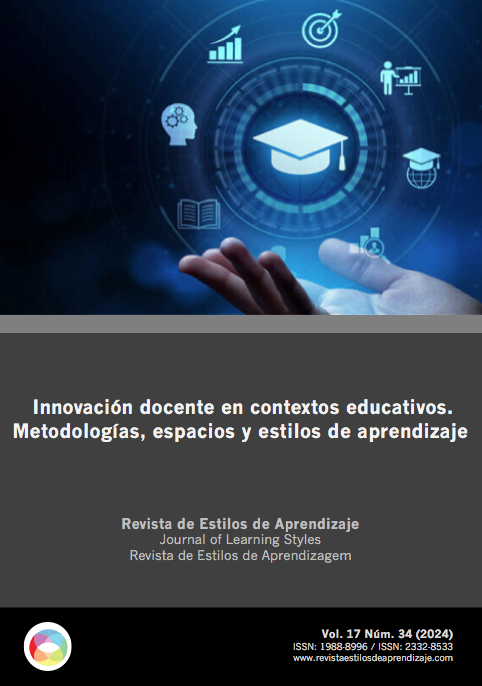
It is important to generate a reflection on learning styles and the diversity of ways in which students learn today. Therefore, teaching innovation groups or entities should contribute to the improvement of the quality of teaching and learning processes, as well as a reflection on the existing educational system and models. The main objective is to generate a significant impact on teaching practice and contribute to the improvement of the quality of teaching and learning processes, through the design, implementation and development of good innovative teaching practices that favour spaces for lifelong learning for our students and a collaborative culture that also allows for the professional development of teachers. Reference will be made to methodologies aimed at the development of students' personal, academic and social competences that favour the education of the whole person.
This issue will promote the dissemination of studies, research results and proposals for intervention and innovation in educational contexts that address the impact of new methodologies and the management of learning spaces, which favour the training of professionals involved in the transformation of their environment.
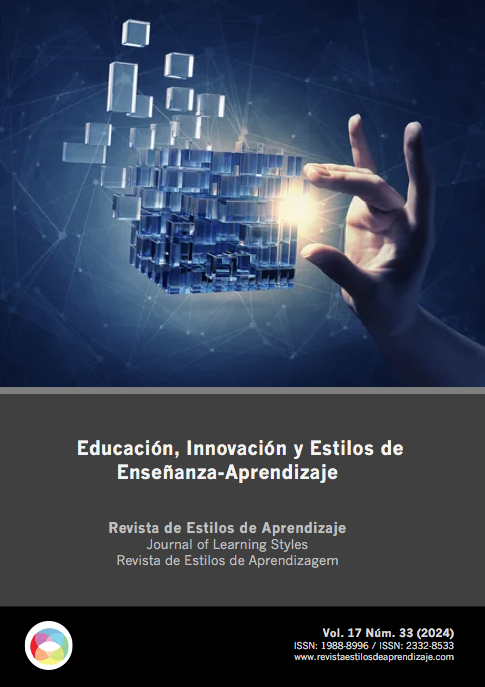
It is through education that today's learning styles must be addressed, with the aim of guaranteeing the correct design, planning and implementation of teaching models that allow for a significant impact on the learning of all students. A personalised education that makes use of technology and innovation as resources to address the needs of the different cognitive processes, and that promotes the development of capabilities and the acquisition of skills demanded by companies and society in general in the 21st century.
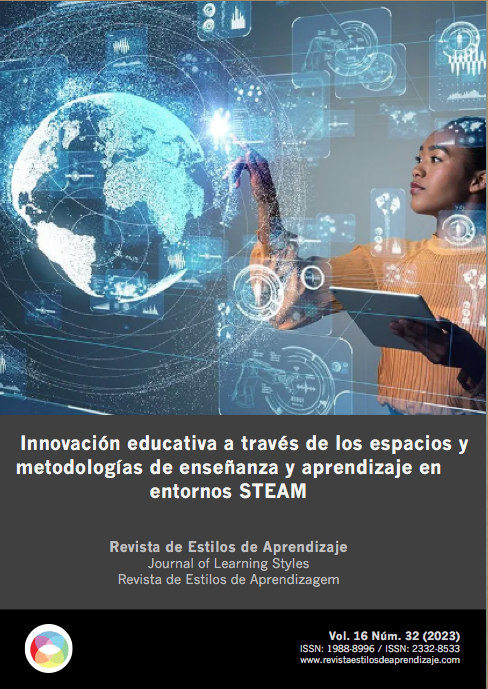
Education has experienced a paradigmatic shift, driven in part by the global pandemic, which has highlighted the relevance of technology in teacher and student training, as well as in the educational process as a whole. To respond to this need, STEAM (Science, Technology, Engineering and Mathematics, linked to the Arts and Humanities) initiatives are being carried out internationally to promote the acquisition of 21st century skills, such as creative thinking, teamwork, communication and problem solving (Allina, 2017; Haesen and Van De Put, 2018; Perignat and Katz-Buonincontro, 2019). STEAM education seeks to value diversity in learning and allows the integration of practical knowledge through the resolution of real problems, highlighting the importance of the environment and specific educational resources to develop different Learning Styles. This new special issue focuses on innovative pedagogical proposals within the STEAM (Science, Technology, Engineering, Arts and Mathematics) framework, emphasizing the importance of adapting teaching to the skills necessary in the framework of today's society.
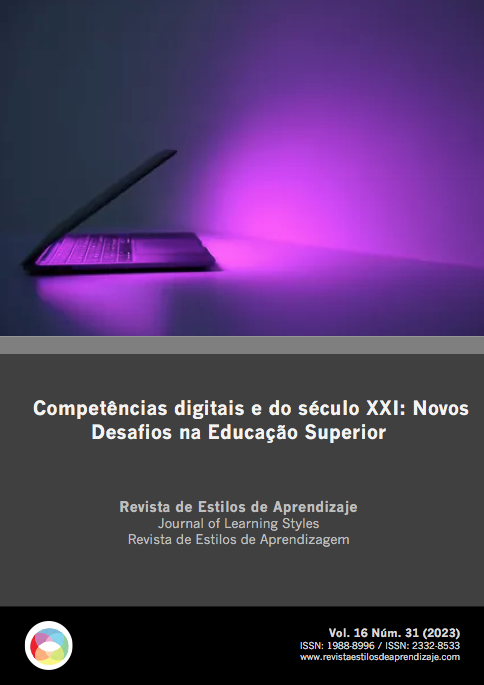
The advance of digital technologies in society in recent decades, and further driven more strongly in education due to the physical closure of schools, has highlighted a new dimension in pedagogical skills and competences, specific and necessary. They have resulted in new challenges for high-quality teaching practice adapted to the changing needs of students. In this context, researchers around the world have begun to take a closer look at the digital competences of teachers, as well as the importance they assume in promoting them in their students.
Among the skills for the 21st century different areas are indicated such as: digital skills; information management/organisation; research skills; planning and problem solving; reflexivity; critical thinking, communication skills; collaboration; social responsibility; (multi)literacy, innovation; creativity; productivity and e-business, highlighting the practical, technical, pedagogical and ethical aspects associated with them.
The physical closure of educational institutions worldwide due to COVID-19 affected almost 1.6 billion young children, of which 220 million in higher education, promoting the adoption of Emergency Remote Teaching (ERT), where there was mainly a mere digitalisation process of analogue practices, i.e. conversion from atom to bit.
Launched in 2006 and updated by the Council of the European Union in 2018, the eight key competences for lifelong learning (Council of the European Union, 2018; European Parliament & Council of the European Union, 2006). Of these, some competences have been developed through specific frameworks: (a) digital competences: digital competences for citizens and educators; (b) personal, social and "learning to learn" competences: LifeComp; and (c) entrepreneurship competences: EntreComp, thus materialising the European Union's concern with such areas.
This monograph brings together research works that address the themes of digital skills, interconnecting them to 21st century skills with a focus on con vences education that can contribute to the understanding, enhancement, discussion, and the generation of new knowledge around the theme.
Research lines:
* Assessments of digital competencies in basic and higher education, in distance education and in organisations;
* Literature reviews on assessment and development of digital competencies in the teaching and learning process in higher education;
* Analysis and comparison between frameworks for assessment and development of digital competencies in higher education teaching;
* Elaboration and validation of instruments for the assessment of digital competences in the process of teaching and learning in higher education;
* Activities and training programs for the development of digital skills;
* Relations between digital competences and learning styles.
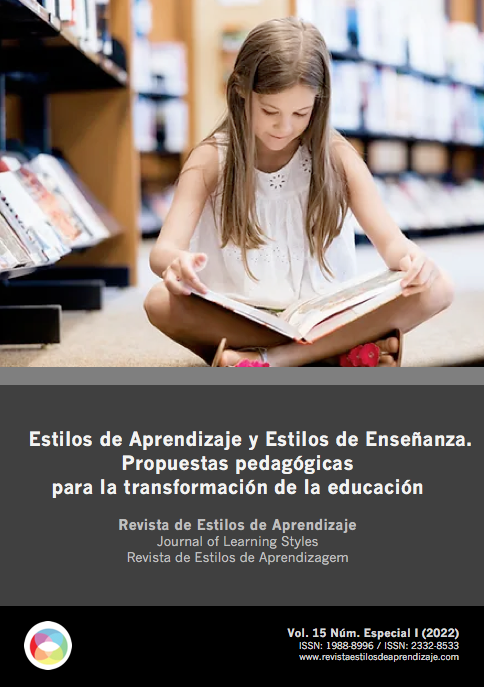
The journal Estilos de Aprendizajecompletes its first 15 years with 30 published issues and more than 400 articles that highlight the background and evolution of studies on teaching and learning styles, as well as channelling the dissemination of advances in research and innovation in Education in recent years. In addition to increasing its indexing and impact with the recent incorporation to JCR-JCI and obtaining FECYT quality recognition in the area of Education and Educational Research, the journal aims to be a space for communication, critical reflection and knowledge transfer, through the dissemination of good practices and educational experiences that highlight projects and initiatives related to teaching/learning styles, spaces and methodologies,
In this new special issue to be published in November 2022, we will promote the dissemination of pedagogical proposals that include the methodology of Learning Styles, and the design of new lines of research and pedagogical application that enrich the range of didactic possibilities in the teacher-learner interaction. We have highlighted that people, both children and adults, learn differently. We only have to analyse how we each prefer an environment, a space, a situation, a type of exercise, pedagogical tools, methods, a degree of structure, technologies, a form of socialisation, a way of collaborating and sharing that shows that we have a "preferred learning style" or a way of learning.
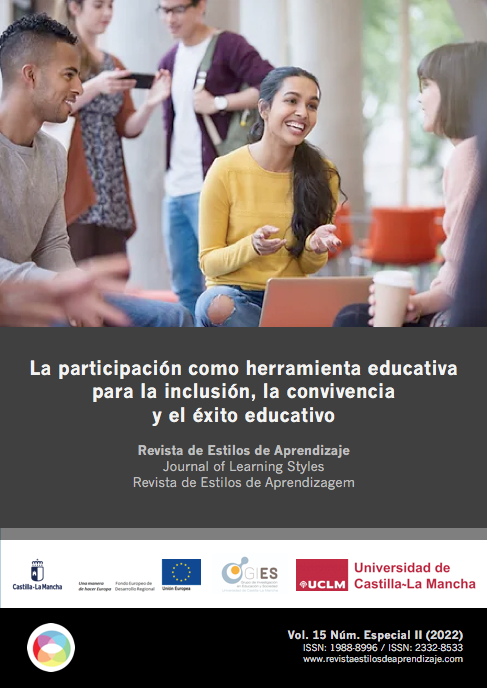
As pointed out by the international reference organisations (EU, UN, UNESCO), participation is a factor of social and educational integration which must be developed in educational programmes from early childhood onwards. From this perspective, participation, in addition to being an element of transparency and decision-making for the educational community as a whole, constitutes a working tool for the development of coexistence and a fundamental element for inclusion.
At the time, Dewey already indicated that democracy is not only a system of government, but a way of understanding coexistence and social relations, that is, of constructing the processes of participation in the community. Since then and up to the present day, many pedagogical authors have pointed out that participation, citizenship and democracy consist of a praxis that needs to be learned.
There is growing evidence that global actions of educational participation are an indicator of educational success and improved academic performance. In addition to promoting critical and reflective thinking, improving the climate of coexistence in schools and the satisfaction of all members of the educational community.
For this reason, the Journal of Learning Styles will dedicate the next Vol. 15 Special Issue II (2022) to the topic of participation as an educational tool for inclusion, coexistence and educational success.
We hope that the contents of this issue will be of use to members of the educational community and contribute to building a more democratic and inclusive school and society.
Lines of research:
The participation of the different members of the educational community: families, teachers and students.
Strategies for participation in the educational centre. Democratic construction and citizenship.
Democratic management of schools. Strategies for improving coexistence and inclusion.
Methodologies that encourage the participation of all members of the educational community.
The participation of families and the local community in educational institutions.
Educational innovation in the classroom. Learning from student participation in schools, colleges and universities.
Collaborative and networked work for the development of educational participation as a factor in school success. Experiences in community education.
Coordinators:
Rut Barranco Barroso, Junta de Comunidades de Castilla- La Mancha. Department of Education and Science and Associate Professor at the UCLM. Rut.Barranco@uclm.es
Sonia Morales Calvo, Director of the Innovation and Social Inclusion Classroom of the UCLM. Member of the GIES research group. Sonia.Morales@uclm.es
Rosa María Marí Ytarte, Lecturer at the UCLM and Director of the Research Group GIES.
Promoting entities:
Education and Society Research Group, GIES. University of Castilla La Mancha
European Regional Development Fund, European Union
Juanta de Castilla La Mancha
Project:
Action-research project for the coexistence, participation and school integration of students in Compulsory Secondary Education in CLM / SBPLY/19/180501/000345
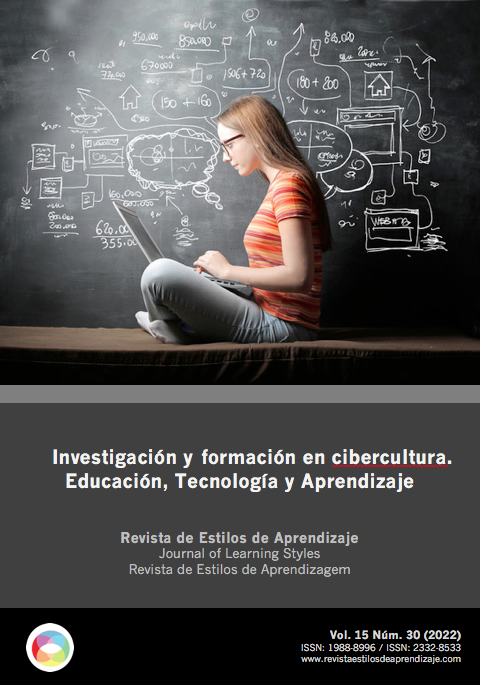
The pandemic caused by the new coronavirus, among the many demands of adaptation to life in society, has revealed the inequalities (material and symbolic) and contradictions (of form and content) in educational offers and practices, highlighting the power of Cyberculture and, at the same time, our lack of knowledge about what can be done in it/with it. We understand Cyberculture "as the contemporary culture that revolutionises communication, production and networked circulation of information and knowledge at the city-cyberspace interface", being structured by digital technologies from which new cognitive profiles emerge, with their own demands and which draw unique and differentiated relationships with the teaching-learning processes.
Faced with the need for physical isolation, to contain the circulation of the virus, educational institutions were forced to think of distance strategies that would allow the continuity of educational rituals, which was not a simple process, for several reasons. Life in cyberculture, although familiar to many students and teachers, does not necessarily dialogue with what is/has been practised in schools and universities, which has required an effort to appropriate and create other forms of learning through encounters produced on the digital network. In this context, it is imperative to debate, invest, train and stimulate experiences in/with Cyberculture, creating pedagogical intentions that are not reduced to emergency teledocency, but that create languages, procedures and ethical-aesthetic-political commitments to new ways of educating.
In this issue of the Journal of Learning Styles we can find research articles resulting from the practices and training proposals of cyberteachers and cyberstudents that have been forged in the pandemic or before it. Some analyses have been collected that contemplate the concept of Online Education, understanding it as a phenomenon of Cyberculture, practised in a network, and which must be differentiated from the structure of Distance Education and the current practices of Distance Learning, involving teaching-learning processes mediated by digital interfaces and transiting through various computer systems, dialoguing with interactivity, dialogue, connectivity and authorship.
The research articles, studies, experiences and practices deal with the following themes:
- Education in cyberculture;
- Teaching in online education;
- Teaching and learning processes in e-learning;
- Innovation in distance learning in emergencies;
- Distance education in the Covid-19 pandemic;
- Learning styles in online education;
- Architectures and didactic designs in online education;
- Teaching and mediation in online education;
- Online research and training.
Translated with www.DeepL.com/Translator (free version)
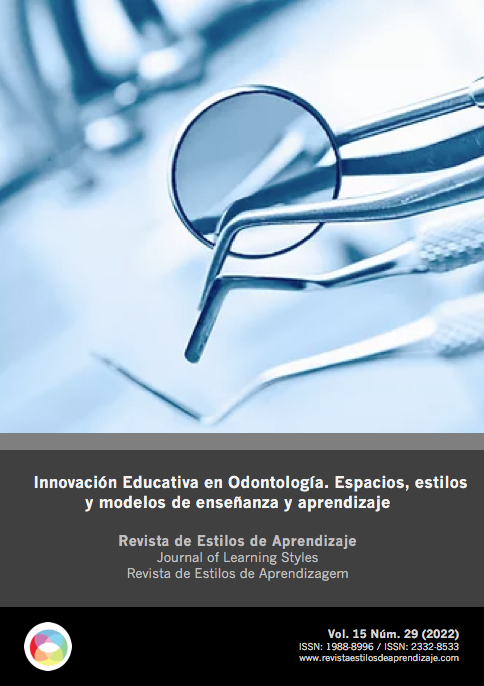
Teaching and learning in dentistry, as in any other healthcare branch, are undergoing a major transformation as a result of the incorporation of technology, both in traditional teaching spaces (classrooms, laboratories and healthcare clinics, among others) and virtual ones, and also due to the change in the profile of students, for whom technology is more than something complementary, it is a way of life.
The COVID-19 pandemic has meant the definitive leap in both theoretical and practical subjects in Health Sciences. This has led to an effort on the part of institutions and teaching staff to review and even redesign the guides for the different subjects, choosing in each case an instructional model adapted to this new reality.
With this issue dedicated to teaching innovation in the field of dentistry, the aim is to publicise new educational proposals implemented in different areas: universities, continuing education and postgraduate training centres, scientific societies and professional associations that transform teaching and learning methodologies, both for students, professionals and teachers.
These proposals will be aimed at achieving an education based on excellence and on continuous, dynamic training, adapted to any social or technological change that may arise, without forgetting to facilitate universal access, without discrimination of any kind.
All this implies, firstly, structural modifications and the incorporation of new resources. Secondly, active participation of both students and teachers, encouraging their capacity for reflection, analysis and criticism in learning and monitoring their progress and evaluation.
This issue of the journal Estilos de Aprendizaje aims to give visibility to research work, articles, experiences and projects on the following topics:
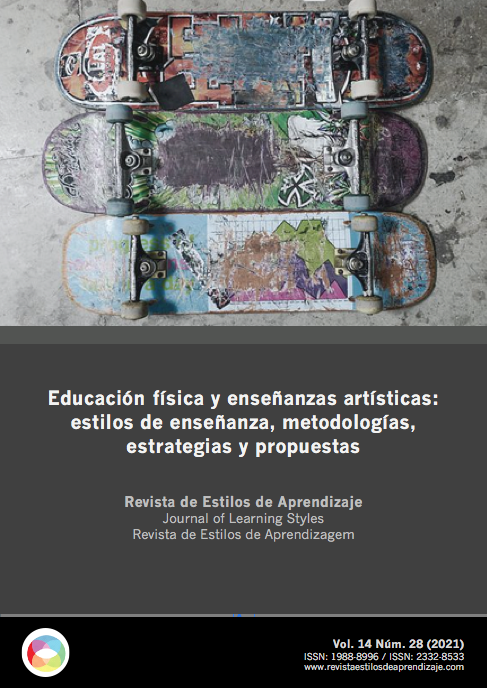
The basic curriculum in Primary and Secondary Education, as well as in the artistic disciplines, establishes the importance of using different teaching styles, methodologies, resources and teaching and learning strategies, with great relevance for physical education, dance, theatre, corporal expression and music as means to favour personal and social development. Similarly, emerging pedagogical methods reflect the importance of individualised teaching, taking into account the characteristics of the person in interaction with the context in which he or she develops. However, in order for these methods to favour the teaching and learning process, it is necessary to know the learning styles of students and the teaching styles used by teachers, which in turn respond to the great diversity that exists in the classroom. In this context, both physical education and the performing arts in their different corporal expression contents contribute to the integral formation of the individual and culture. These are fundamental aspects for favouring cross-cutting and interdisciplinary knowledge that facilitates the acquisition of the pupils' basic competences. Where teacher training becomes relevant to promote new ways of teaching and learning, reflection and investigation of professional practice, creating motivating environments and democratic coexistence in the plural society of the 21st century.
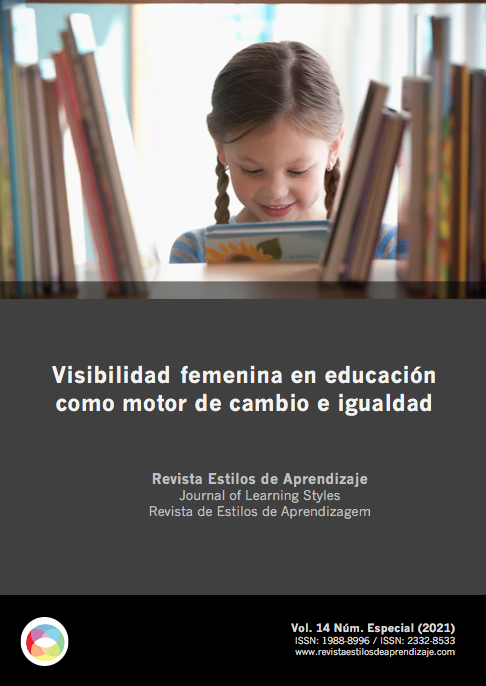
The UN Sustainable Development Goals reflect that quality education cannot be separated from achieving gender equality. Access to education improves people's quality of life, but only if this access includes inclusive and equitable education can it help develop solutions to the world's most serious problems. This requires the establishment of new scenarios that promote measures focused on advancing innovative training at different educational levels towards equality between women and men.
The need to work in a cross-cutting manner is the principle of equality of women and men in education, and in equality policies is included in different national and international regulations.
In this line, together with the measures proposed by international regulations, Spanish regulations propose, in addition to non-discrimination between male and female students, the need to promote proactive training towards equality for both sexes. This training necessarily involves, among other measures, research into teaching methodologies and content that recognise and make visible the contributions of women to education and social progress.
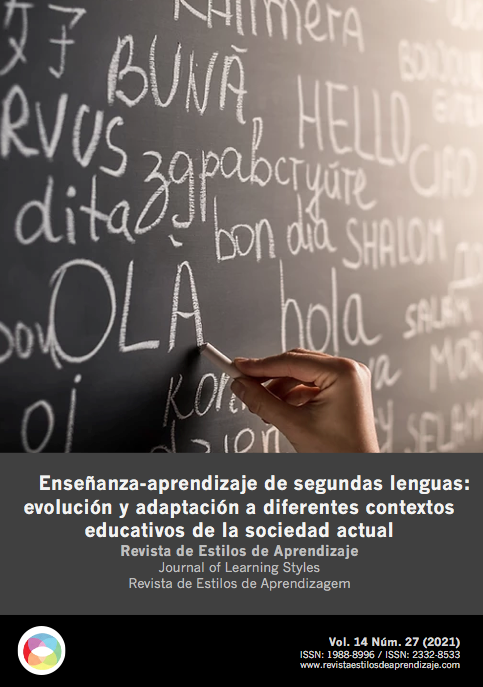
Communication is, without a doubt, one of the signs of identity that best define the human species since the beginning of time. Without it, the development of society and its evolution to the paradigms we know today would not have been possible. Although the human capacity to use more than one language has always existed, there are two events that have been decisive in shaping the processes of teaching and learning second languages. On the one hand, there was the consolidation and institutionalisation of Applied Linguistics as an independent science in the 20th century and, on the other, the emergence of the Common European Framework of Reference for Languages (CEFR) at the beginning of the 21st century. It is worth noting that, although the CEFR was initially conceived and developed from a Eurocentric perspective, its influence has transcended the borders of the countries that make up the Old Continent.
Since then, second language teaching methodologies have undergone a significant shift towards communicative approaches which focus on understanding and making oneself understood through the channelling and development of the four basic skills (reading, writing, listening and speaking). Consequently, learners' learning styles are also changing in search of effective language use where the ultimate aim is not to achieve a comfortable interlanguage that allows acceptable communication, but real improvement. In addition, the reasons for learning a second language are diversifying and specialising according to both personal and social needs. At many times, society imposes on us certain standards of survival that go beyond our individual interests. Such is the case of learning English as a second language as opposed to learning another language that may appeal to us more on an individual level. To this must be added the widespread use of new technologies that inevitably require some knowledge of a language that may be different from our own.
As a result, patterns of second language teaching and learning have transformed formal, non-formal and informal education, influencing settings as diverse as schools, colleges, universities, academies, social networks, cinema, television and meetings with friends, among others. While the changes are remarkable, teacher training is not yet in line with reality. On a daily basis, bilingual education is gaining ground over non-bilingual education without all formal education settings being able to provide the quality response that would be expected of them.
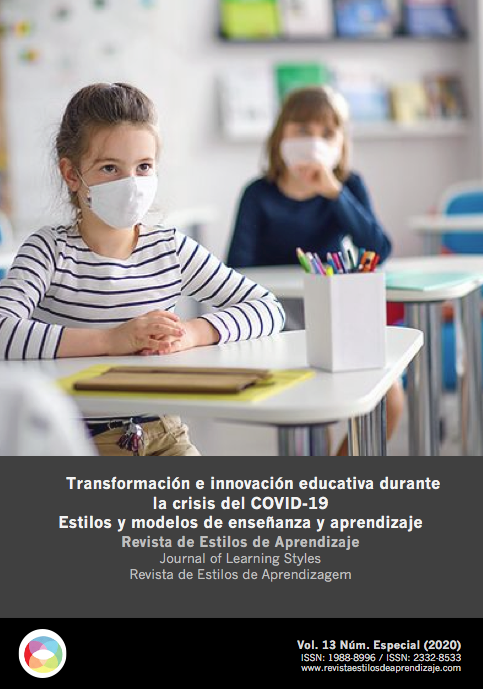
The COVID-19 health emergency has restructured the teaching and learning system in universities and educational centres at an international level. The suspension of face-to-face teaching activities has challenged educational institutions to move, through an urgent transition plan, to digital teaching. In this context, it is of the utmost importance to share experiences and results on the mechanisms and process of adaptation and transformation of teaching and learning methodologies.
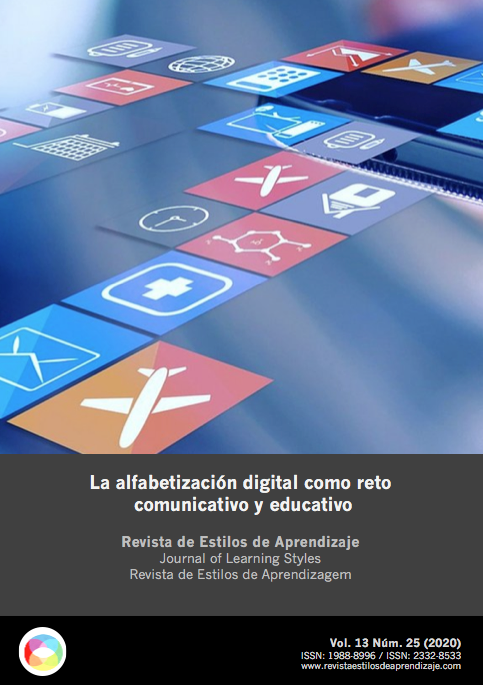
Fact checking and critical thinking to fight against false news: Digital literacy as a communication and educational challenge
The recent transformation of social, cultural and technological processes, makes one of the biggest challenges of education to achieve a significant impact on teaching and learning, training people with critical thinking, capable of solving society's problems.
The greatest challenge is to promote digital education and literacy that will enable them to acquire the skills and abilities necessary to make correct use of information. The immense generation of textual and audiovisual content that has arrived with the expansion of the Internet, makes it necessary for users to have tools to verify and contrast information.
In this context, education is positioned as a key tool to train people with a critical spirit. Social networks (Twitter, Facebook, Instagram, Youtube, Whatsapp, etc.) are an optimal and easy context for the proliferation of hoaxes, false news or fake news that spread much faster than news coming from traditional media. In view of this context, it is necessary for digital literacy to focus not only on facilitating access to new technologies, but also on educating society to know how to detect the hoaxes or false news that it will face on the Internet.
Translated with www.DeepL.com/Translator (free version)
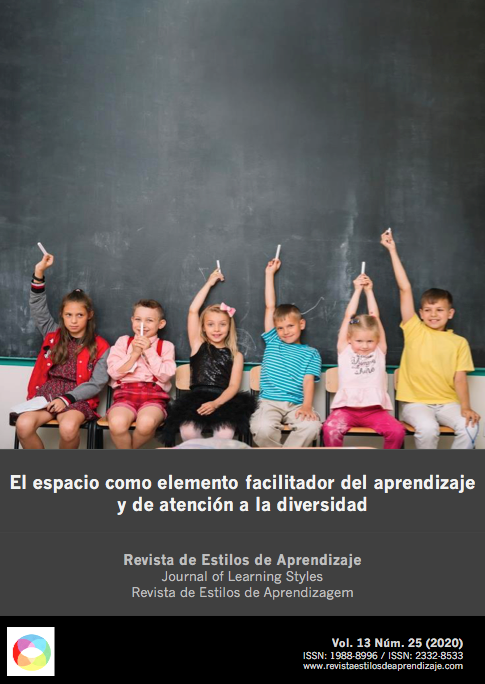
In the last decades changes in social, cultural and technological processes, among others, give a different perspective to education and its objectives. The new educational proposals have led to ideas based on the distribution and organisation of learning spaces. Psychological, physical and neuroscientist studies on the influence of spaces in human activity have concluded that space can transform and have a direct impact in the learning and development of people and organisations.
According to this premise, the scope of education in the XXIst century raises the need to rearrange educational spaces by promoting a new approach to learning environments. Some of the best educational centres in the world have already focused on the pedagogical value of learning spaces, where innovation can be related to the transformation experienced by both the work and study environments.
This particular setting serves as a social movement for modernization in response to technological innovation, and attention to diversity of people and learning styles. Such a transformation requires, on the one hand, a change in the teaching practice through the organization of learning spaces; and, on the other hand, the integration of active methodologies and new didactic elements that promote collaborative work, along with students' critical, creative and research thinking.
From this perspective, contemporary pedagogy requires the development of new spaces and inclusive educational environments, and also of new teaching and organizational approaches that meet the needs and requests of students as a whole.
To respond to these issues, Revista Estilos de Aprendizaje (Journal of Learning Styles) will focus its Vol. 13, No 25 (April 2020) on:
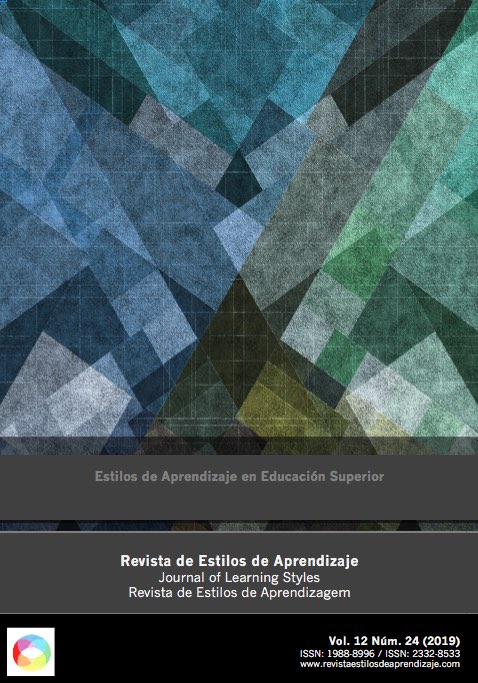
We are living in one the decades with more economic, social, cultural and technological changes than ever. This situation has transformed the way we behave and see the world. In consequence, the education sector has opened a discussion about the need for innovation and for a methodological change in Higher Education in order to promote attention to the different learning styles university students have. From these reflections, among others, a clear commitment to use technology and active teaching-learning methodologies meeting nowadays students' needs arises.
Given the requests to promote speeches and practices that consolidate the basics for a critical, reflexive and creative thinking that helps students understand, advance and adapt to the changes in today's society, it is necessary to look into the reflection on the education quality problem. This involves the need for university institutions, along with the teachers and/or professors at Higher Education, to focus on a new vision and model concerning their students' education.
From this perspective, this issue of the Journal of Learning Styles aims at dealing with innovative approaches to study old paradigms and broaden the horizons of analysis of innovative experiences, studies and practices in Higher Education. Special attention will be paid to dynamics and interactions developed from virtual environments and tools, university teaching practices, teacher training and the different learning styles students have.
Therefore, this monographic issue is intended to meet original contributions on:


